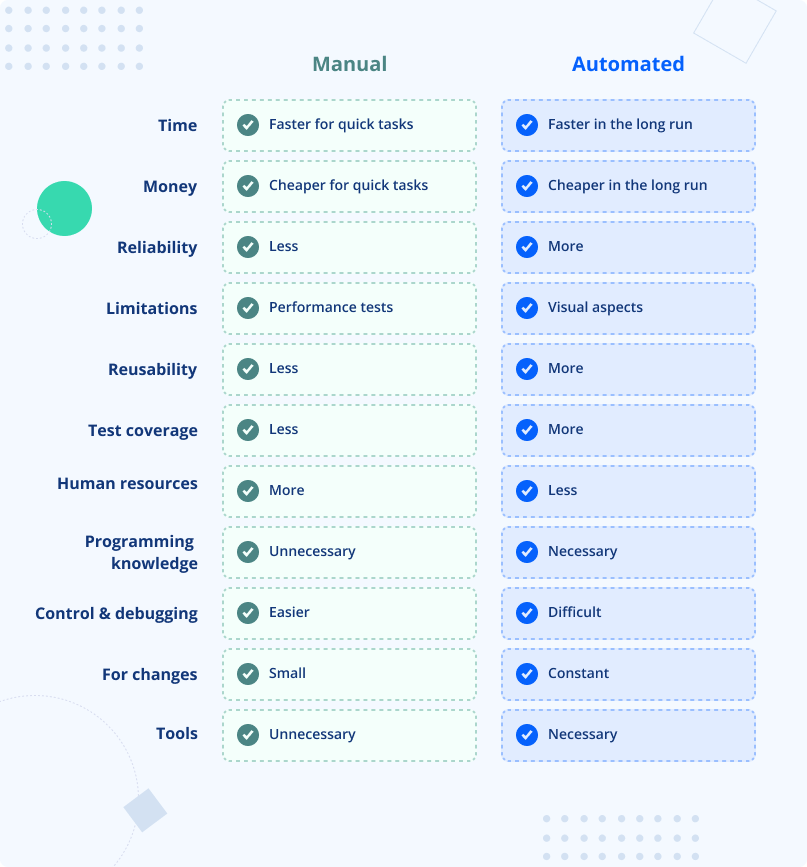In 1962, NASA’s Mariner 1 was the first US attempt to send a spacecraft to Venus; it was an ambitious mission and a great leap for the US space program. Unfortunately, the spaceship veered off course shortly after its launch due to a software bug. A NASA employee was forced to command the spacecraft to self-destruct. It was a costly mistake. Eighteen million dollars went in vain due to a simple mistake: a missing hyphen in the code. While it was a setback then, it was a valuable lesson to showcase the importance of thorough testing and attention to detail in software development. Mistakes happen, but learning from them and using them to improve future project processes is essential.
The story of the Mariner 1 spacecraft highlights another vital lesson: the importance of hiring the right people for the job. This emphasizes the importance of having a good hiring process and ensuring the right people with the right skills and experience are working for your operations.
This guide is a valuable resource for anyone looking to hire quality assurance testers, whether for a short-term or a long-term partnership.
What is Quality Software and Quality Assurance?
Quality is vital across a spectrum of initiatives, regardless of the application type—whether it’s web-based, mobile-based, or a fusion of both. Quality entails delivering a seamless and gratifying user experience, devoid of glitches, performance lags, interface inconsistencies, and subpar user interactions. Prioritizing quality is crucial because a substandard experience may trigger user frustration and undermine confidence in your offering. This could prompt users to explore alternatives, posing a threat to your business’s success.
Software Quality Assurance (QA) involves a proactive approach to ensure the efficiency and effectiveness of software processes, aiming to meet required standards and specifications. It encompasses various activities such as planning, testing, and monitoring throughout the lifecycle.
Quality Assurance: Software Testing Process
When it comes to understanding the QA process, the Software Testing Life Cycle (STLC) is a great model to follow. Think of it like a journey; each stage is a pit stop. Below, you can see the visual representation of the six main stages of the STLC.
The Main Principles of Software Testing
The seven principles of software testing are foundational, and they include:
- Testing shows the presence of mistakes, but it’s impossible to test everything;
- Testing should be done as early as possible to catch and fix errors before they snowball;
- Defects are usually concentrated in a small part of the system, so focus on that area;
- Tests should be updated regularly to find new errors;
- Testing should be tailored to the purpose and industry of the software;
- The absence of errors doesn’t guarantee success; the software should meet user expectations;
- Testing should be independent and handled by unbiased professionals.
Types of Software Testing
When understanding software testing approaches, it’s important to know the different types of software testing.
Manual software testing is like trying to solve a puzzle by yourself. More specifically, it is when a QA engineer manually runs tests without any automation.
Automated software testing is like solving a puzzle with a cheat sheet. It’s when a QA engineer uses tools such as Selenium, PHPUnit, and Mockery to run tests automatically.
Manual and automation testing have their unique set of advantages and disadvantages. For example, manual testing is excellent for testing the usability of software, but it can be time-consuming and prone to human error. In contrast, automated testing is great for regression testing, but it’s not suitable for testing the usability of software.
So, when it comes to testing, it’s essential to know when to use manual or automated testing.
Software testing can also be classified according to the test object.
Software functional testing
Software functional testing checks the part of the system that is necessary for a user to complete a business scenario (like navigating through forum sections). It includes testing techniques such as:
- Unit testing
- Gray box testing
- Black box testing
- White box testing
- System testing
- User testing
- Database testing
- Regression testing
- Smoke testing
- Ad hoc testing
- Exploratory testing.
Software non-functional testing
Software non-functional testing checks the system performance under various conditions impacting user satisfaction, such as reliability, usability, and scalability. It includes methods such as:
- Security testing
- Localization testing
- Usability testing
Another way to classify software testing is according to the positivity of the scenario.
Negative software testing
Negative software testing is when invalid values and actions are entered to check if the software behaves correctly and gives a human-readable error message.
Positive software testing
Positive software testing is when proper data is entered to check if the program works correctly and behaves as intended.
Why You Need to Hire a QA Tester: Importance of QA Testers in Software Development
Ignoring software testing can lead to several severe consequences, including:
- Lower-quality software: Without adequate testing, it’s much more likely that bugs and other issues will go unnoticed, leading to a software product that is less reliable, user-friendly, and secure.
- Higher direct costs: Compensation for individuals engaged in the endeavor, including the QA team, will rise if testing is not conducted adequately.
- Loss of customer trust and damage to the software provider’s brand image: If customers don’t trust the software provider because of the quality of their products, they will likely look for alternatives.
- Long-term damage to the software provider’s reputation: To avoid these damages, it’s important to start testing early so that bugs and other issues can be identified and addressed before they become a bigger problem.
When it comes to running a successful business, a quality assurance developer is a must-have. The QA tester engineer helps you ensure that your products and services meet the highest standards and offer a host of benefits for your business. Here are just a few examples:
Improve Customer Loyalty
You can build trust with your customers and keep them returning for more by consistently delivering high-quality products and services. Think of it like your favorite restaurant — if they consistently serve delicious food, you will likely return. The same goes for your business.
Faster Time to Market
With a robust QA process in operation, early detection and resolution of issues become possible, expediting the release of your offerings to the market. This is especially important in today’s fast-paced business environment, where every second counts.
Lower Development Costs
By identifying issues early, you can also reduce operational expenses. The cost of fixing a problem discovered post-implementation is significantly higher than one detected during the planning phase. Thus, by identifying issues early, you can achieve long-term cost savings.
When searching for a top-tier quality assurance engineer, it’s vital to find someone with the ideal blend of intelligence and diligence. This individual not only fulfills their responsibilities but also understands the broader scope of the task, going above and beyond to ensure its success.
How to Hire QA Tester: What to Look For
What is a Quality Assurance engineer?
The QA engineer, often referred to as the software tester, is responsible for designing and executing plans to ensure that the final output meets user expectations and is free from any detrimental bugs or glitches.
What are the QA engineer’s roles and responsibilities?
The variety of QA job titles and the ambiguity surrounding them can create confusion about the specific roles and responsibilities of testers. The titles can vary between companies and even within the same company, making it difficult to understand the exact duties and skills required for a particular position. This makes it challenging for job seekers to identify the right job for them and for employers to find the right candidate for a position.
Here, we’re going to break down the three leading players in the world of software testing. We’ll take a closer look at the Manual QA Engineer, Automation QA Engineer, and QA Lead.
Manual QA Engineer (manual tester, software test engineer, QA analyst)
Manual QA specialists play an essential role in finding bugs in a system by using their human observation skills. They work closely with the QA Lead to ensure that test requirements align with test objectives. The QA Lead develops a comprehensive test plan, including the testing workflow, test strategy, environment requirements, test schedule, functions to be tested, resources and responsibilities, deliverables, exit criteria, and tools.
A manual test is the best way to spot UI and usability issues that automation tests can’t pick up on. During testing, QA engineers compare the actual results with the expected outcomes outlined in the test case and log any defects they find. These defects are then reported to other departments through test execution status reports or bug tracking and management tools, such as Jira.
Once the engineering team has resolved a defect, testing teams verify that the problem has been fixed.
Testing tools:
- Test management tools (TMTs): Test Manager, TestLink, SpiraTest, TestRail, HP-ALM (QC)
- Defect tracking tools (DTTs): BugZilla, Mantis, IBM Rational ClearQuest
- Project management software: Jira, Redmine, YouTrack, and Backlog
- MS Excel
Automation QA Engineer (SDET, technical tester)
Automation QA engineers possess more advanced skills than manual QA experts, as they are responsible for writing scripts to automate repetitive tests. They have programming skills that enable them to write automated test scripts. As a result, they are often referred to as “software developers in testing.” These QA engineers design, build, test, and deploy efficient test automation solutions using various automation tools. They aim to automate as much of the testing process as possible using minimal code. This way, they optimize the testing process and minimize the use of test resources that would otherwise be utilized if done manually.
Testing tools:
- Tools required for manual QA testers
- Automation tools (Selenium, TestComplete, Katalon Studio, and Ranorex)
- Automation testing frameworks (Serenity, a Java-based framework, and developer-centric Cypress)
- IDEs for writing code (VSCode, Visual Studio, and IntelliJ IDEA)
- CI/CD tools (Jenkins and TeamCity)
QA Lead (test lead, lead QA analyst, test manager)
The pack’s leader, the QA lead, is responsible for ensuring everything runs smoothly and that everyone is on the same page. They’re the ones who keep the ship sailing in the right direction and make sure everyone is working toward the common goal of creating high-quality software.
Testing tools:
- Manual and automation tools
- Test management tools
What are the Quality Assurance engineer skills and qualifications?
Manual QA engineer skills
- Strong knowledge of software testing processes
- Deep understanding of the development life cycle
- Practical experience with different testing types
- User-oriented perspective
- Data analysis skills
- SQL skills
- Ability to meet deadlines
- Communication and collaboration skills
- Curiosity
- Self-organized and independent
Automated QA engineer skills
- Knowing common computer languages: Python and Java are the most popular programming languages for test automation, followed by Ruby, С++, Perl, and PHP.
- Clear understanding and experience in Agile methodologies
- Analytical skills
- Problem-solving skills
Lead QA engineer skills
- Both manual and automated testing skills
- Adept at planning and people coordination
- Comprehensive knowledge of various testing approaches
- Profound understanding of the business area and the client’s requirements
Why Should You Outsource Quality Assurance with JayDevs?
With JayDevs, you have two options for hiring QA engineers:
- IT staff augmentation services
This option offers a cost-effective solution tailored to your business needs. If you’re operating within a tight budget and lack a qualified team for testing, hiring QA testers from JayDevs is the perfect solution without compromising on quality. It’s akin to finding a sale at your favorite store; you might not realize how much you’re saving until you check the price tag.
For example, if you have numerous code files requiring testing, and it will take roughly 100 hours to test them all, you may want to bring on three testers to assist. Comparing the hourly rate of in-house staff from the USA, including taxes and perks, to a dedicated software engineer from a location like Lithuania, you’ll be pleasantly surprised at the savings.
2. Talent tech recruiting services
Alternatively, businesses can opt for talent tech recruiting services, where an external company handles the entire recruitment process. From sourcing and screening candidates to conducting interviews and assessing technical skills, these services provide a hassle-free solution for businesses looking to hire QA engineers. With no upfront charges and a guarantee of candidate placement, businesses can rest assured that they will find the right candidate for their needs.








